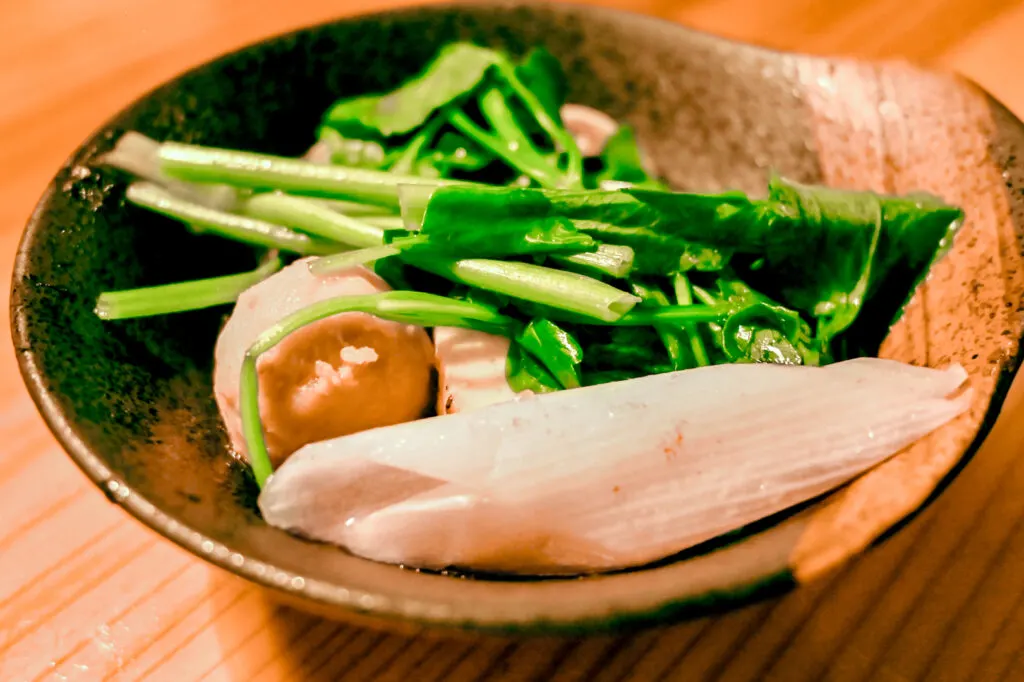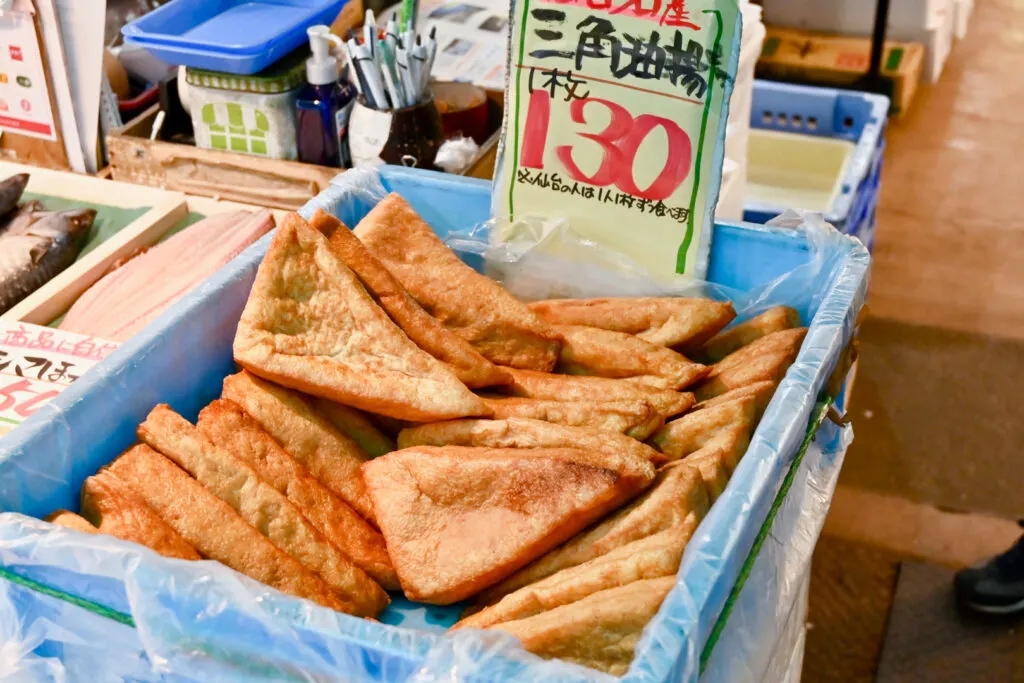The gateway to Japan’s northeastern Tohoku region, Sendai, the capital of Miyagi Prefecture, is just 1.5 hours from Tokyo Station by Tohoku Shinkansen.
Though many will know the city’s name as a result of the 2011 Tohoku Earthquake and ensuing tsunami, Sendai has long been on the map domestically for its food culture, as well as its vibrant festivals and rich history.
Here are some Sendai food specialties to whet your appetite on your next visit.
Table of Contents
Sendai-branded Food
Japan has a love of branding foods with their place of origin. From meat to vegetables, the country is dotted with products cultivated to reflect the traditions and food cultures of each region.
Sendai is no different, boasting a variety of branded food products that have been grown or raised in the area for generations. On the fruit-and-vegetable side of things, branded products include Sendai Seri (Japanese parsley), Sendai Magari-negi (curved bunching onions), Sendai Naganasu (long eggplant), Sendai Yukina (Japanese mustard spinach), and Sendai Hakusai (napa cabbage). When it comes to meat, the city has Sendai Gyū (beef).

Sendai-branded Foods in Local Cuisine
One of the great joys of travel is discovering an area’s local cuisine. While in Sendai and surrounding areas, be sure to search out the aforementioned foods when scanning restaurant menus.
A range of preparation methods allows you to sample the different qualities that each food item possesses without ever getting bored.

Seri Nabe
Miyagi Prefecture is Japan’s largest producer of seri (せり), a subtly flavored leafy green in the parsley family. While many simply use the stems and leaves, the roots can also be eaten, and you’ll likely find the entire plant simmering away in a large earthenware pot when enjoying a meal of seri nabe (Japanese parsley hot pot).

Nabe is one of those dishes that has as many varieties as there are cooks. The seri version stands out for the refreshing flavor of its star ingredient, which provides this cold-weather favorite with a new twist.
Beyond seri nabe, you’ll find Sendai Seri served as tempura, wrapped in pork belly and pan fried, parboiled and salted, and added raw to salads.
Gyutan
When it comes to gyutan (beef tongue), Sendai is king. And please, wipe from your mind visions of tough slabs of meat studded with taste buds: the gyutan (牛タン, ぎゅうたん, gyūtan) here is traditionally served thinly sliced and grilled as gyutan-yaki. In fact, in many cases, it resembles sliced charbroiled steak.

Gently seasoned, the rich flavor of the gyutan shines while its texture is pleasant. Restaurants serving the delicacy abound, but really, there’s no need to even leave Sendai Station, as a selection of gyutan restaurants line Gyutan Dori (Gyutan Street) on the third floor of the station building.
You’ll also find gyutan in stews, curries, sausages, and as shabu-shabu, a fairly recent addition to the gyutan range of dishes that will have you gently swishing thin slices of gyutan in hot water or broth. It can even be enjoyed as sushi!
Sankaku Abura-age
Abura-age (deep-fried tofu) is a common ingredient in Japanese cuisine. Usually thin and with a pouch, it can be served stuffed with warm or cold ingredients in addition to being thinly sliced for soup.

Sendai’s sankaku abura-age (三角油揚げ, さんかく ・ あぶらあげ), however, is anything but thin. Thick, substantial in size, and triangular (sankaku) in shape, it is crisp on the outside and fluffy on the inside. You’ll find it in shops and at Sendai’s morning market, where, on a recent trip, a sign explained that Sendai folks eat one piece each at a time—surely a surprise to many visitors not accustomed to seeing, let alone eating on their own, such a hefty hunk of tofu.
Jōgi Nyorai Saihōji Temple and its neighboring town are home to perhaps the area’s most famous sankaku abura-age, known as sankaku Jōgi abura-age. The temple, which boasts a five-tiered pagoda, and town are located within Sendai’s city limits and are approximately 40 minutes by car from Sendai Station.
Zunda
A coarse, bright green paste made of sweetened edamame, zunda (ずんだ) is ubiquitous in Sendai, showing up as a novelty flavor in snacks both savory and sweet and in its natural form in traditional sweets and modern inventions.

Generally, zunda is used in much the same way as other Japanese sweet bean pastes like anko (red bean paste), and it can be found as both a filling and coating for mochi (glutinous rice cakes). The former is zunda daifuku, while the latter is zunda mochi, the most famous of the traditional zunda snacks. You’ll also find it in manjū (steam buns), monaka (wafer cakes), and dora-yaki (pancake sandwiches).
Zunda also shows up on toast and in milkshakes, ice creams, and cheesecakes—you name it, and in Sendai, someone’s put zunda in it or on it. The lightly sweet, fresh flavor pairs well with cream and feels at home on cake and bread.
One of the best things about zunda is that it’s a breeze to make. With few required ingredients and recipes available online, this is one Sendai specialty that you can easily enjoy at home.
More Sendai Foods to Discover
This is but a short introduction to Sendai’s famous foods. From sake, whisky, and wine to oysters, sea squirts, and other seafood—not to mention more land-based crops—the area is an epicure’s paradise.
So, treat yourself to a taste of Sendai the next time you’re in Japan. At just 90 minutes from Tokyo, it’s a very short trip to paradise.
Read more about food in Miyagi Prefecture:
Miyagi Prefecture Food: 12 Delicious Signature Dishes to Try on Your Next Visit
A Guide to Onagawa’s Michi-no-Eki: Where and What to Eat and Drink in this Gorgeous Port Town
Read more Area & Restaurant guides here
What’s your favorite Sendai food? Which Sendai food specialty would you most like to try?
Pin me for later

Helen A. Langford-Matsui is a Canadian writer based in Kamakura, Japan. In addition to writing, she also runs a small inn with her husband and two children. Through both lines of work, she gets to do what she loves best—share her love of Japan with people from around the world.
